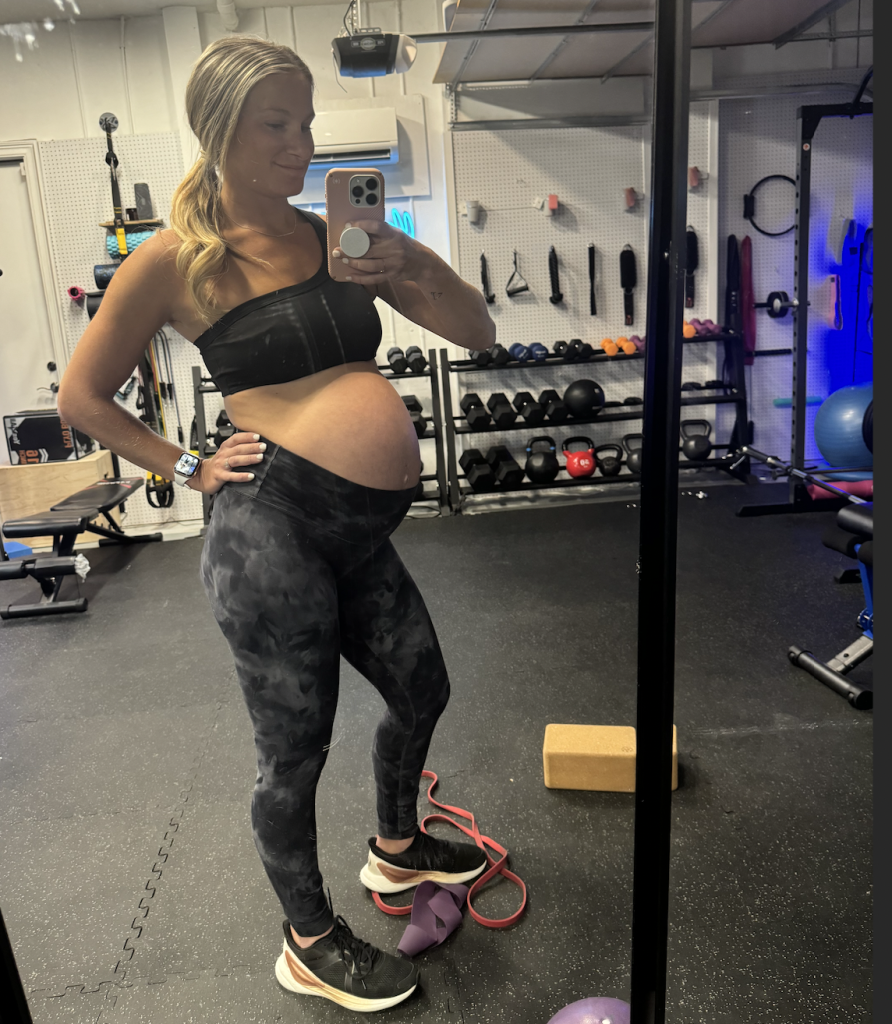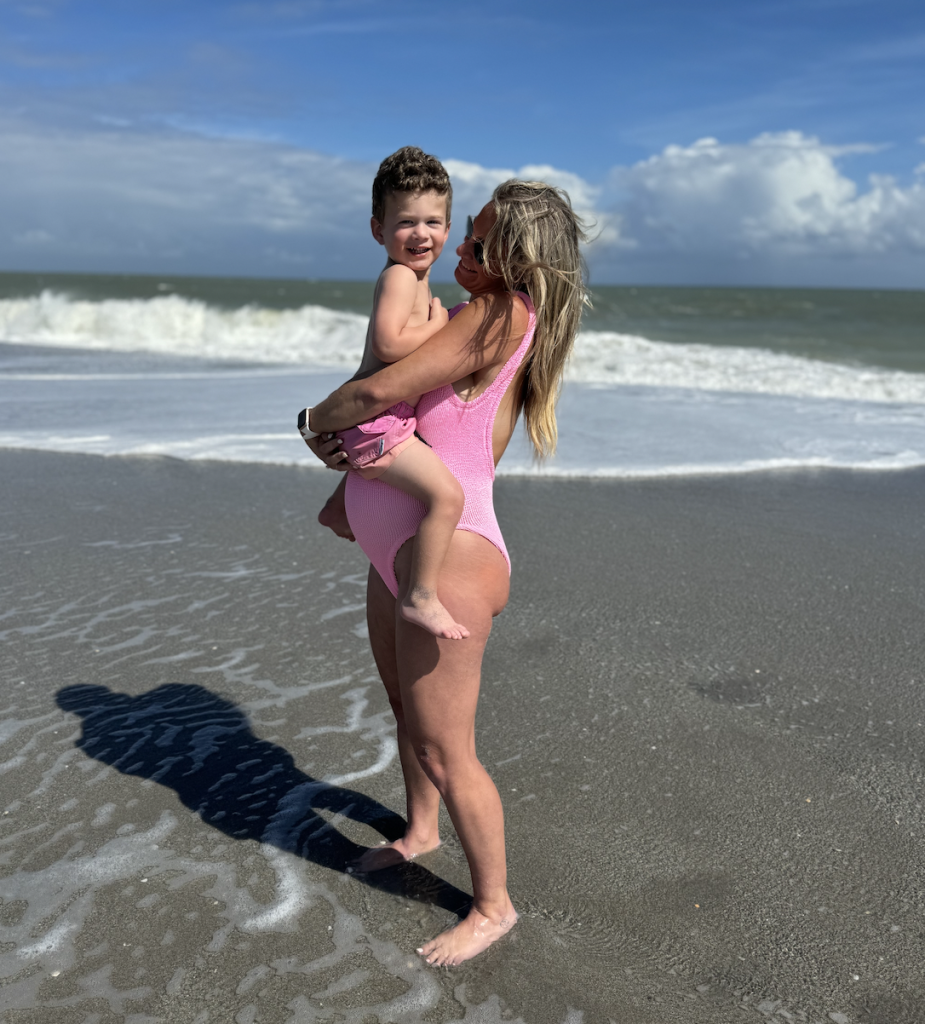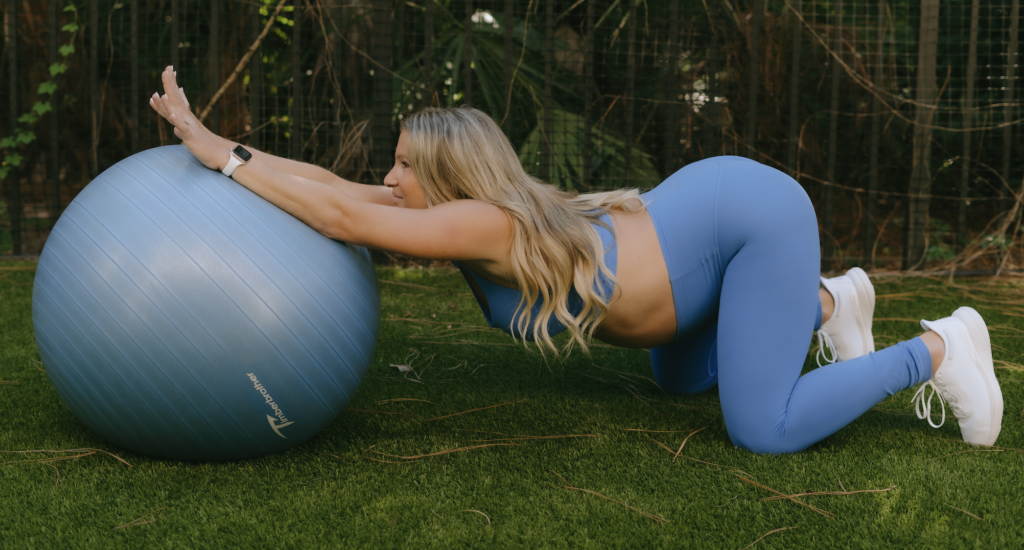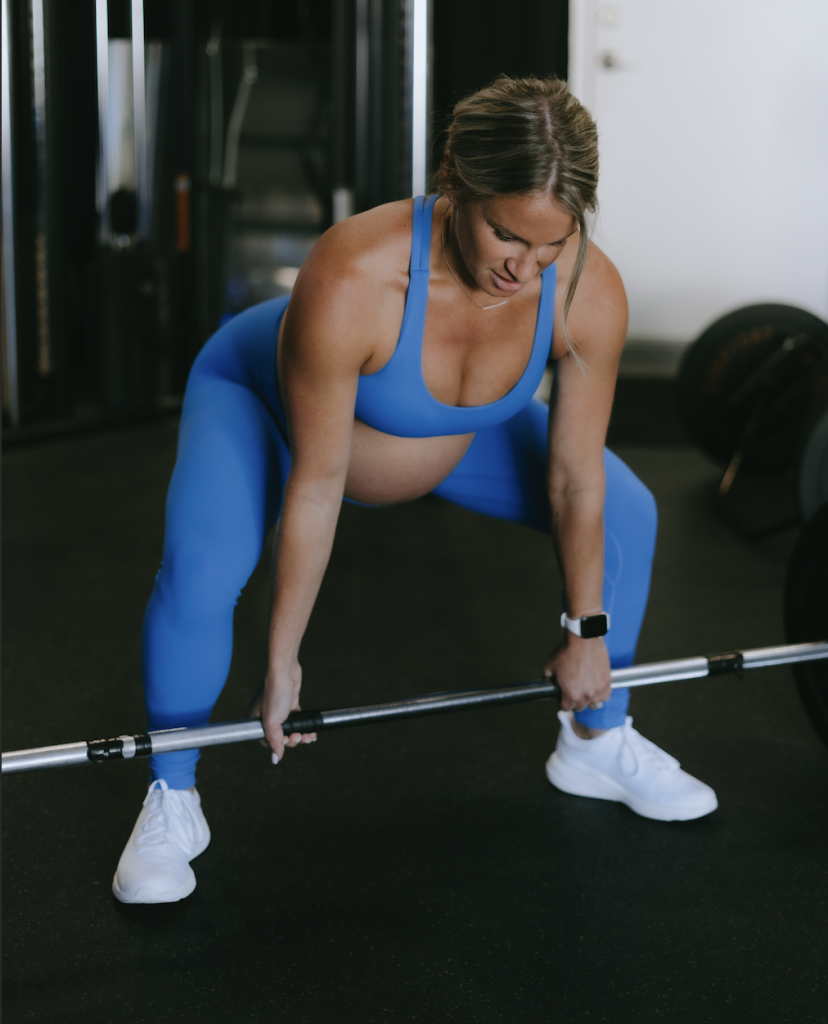Navigating Workouts Around
SI Joint Pain
What Exactly Are The
SI Joints?

The SI joints, for sacroiliac joints, is located between the ilium (or hip bone) and the sacrum, or right above your butt and below your low back. They are responsible for helping transfer energy between the lower and upper body. During pregnancy, changes in gait, posture, and hormones within the body can make it more likely to develop irritation and pain in your SI Joint, leading to discomfort in your low back, hips, or legs. Let’s go into specifics within gait that cause this!
1. Anterior Pelvic Tilt
It is very common to develop an anterior pelvic tilt when pregnant. This is when you stick your belly out and your butt out, with a large sway in your low back. Several reasons, including gait change pulling you forward as your belly grows, while also trying to make it obvious that you are pregnant and not gaining weight for other reasons can initiate this posture to become more automatic as pregnancy progresses. The problem is, when we do this, it lengthens the transverse abdominals as the ribs and pelvis pull away from each other, resulting in our muscles over lengthened and weakening . Since the transverse abdominals are a stabilizer of the SI joints, and are being inhibited, they could affect how we stabilize the joint and increase pain or discomfort.

2. Posterior Pelvic Tilt

It is also common for pregnant mamas to have a posterior pelvic tilt, think shoulders rounded forward and butt tucked underneath you. This results in your unintentionally clenching or squeezing your glutes to help stabilize your pelvic floor, which limits your range of motion and makes your body in movement patterns that almost seem “stuck” because your body is unable to move through the full range with your butt clenched and attempting to hold up your pelvic floor. When our pelvic floor is also clenched because of our glutes, this results in SI Joint pain because the pelvic floor helps stabilize your SI Joints. Sometimes we don’t even notice when we are doing this posterior pelvic tilt, but here is an example from camera roll of my shoulders rolled forward, butt clenched behind me trying to utilize that posture to hold my heavy toddler up at 35 weeks pregnant.
So What Do We Do To Alleviate
Pain?
In order to alleviate pain, we must intentionally strengthen certain parts of our body, as well as provide an alternative exercise for certain movement patterns that may exaggerate this pain. Let’s go into detail.

Focus on exercises that emphasize internal rotation
Because most pregnant women’s hips naturally externally rotate (think toes out heels inward), they end up getting low back pain automatically because this creates compression. Because of this, we want to focus on exercises that force the ilium to come around to the front to create space in the back.
To do this, we focus on strengthening the connection of our posterior oblique sling, which focuses on activating the right lat with the opposite glute simultaneously. This can be done through the different exercises above which involve a rowing/pulling motion in conjunction with a hip extension movement. These will help both unilateral and bilateral internal rotation.
Sub out sumo variations

Because mama’s feet and femur bones are usually externally rotated when pregnant to accommodate her growing belly, if you do have SI joint pain, you may want to Minimize sumo or wide feet exercises to a more narrow stance. This will help mitigate the compression between the tailbone and sacrum.

What are other things you can do to help mitigate si joint pain?
- Avoid long periods of sitting and/or standing
- Focus on exercises that help both isolate and coordinate your low core and pelvic floor so that they are able to support & stabilize your SI joints.
- Check and correct your posture so that your shoulders are stacked over your ribcage
- Get assessed by a pelvic floor physical therapist
- See a Webster certified prenatal chiropractor to ensure spine is aligned correctly
- Stand with a slight lean forward to help leave more availability in your glutes.